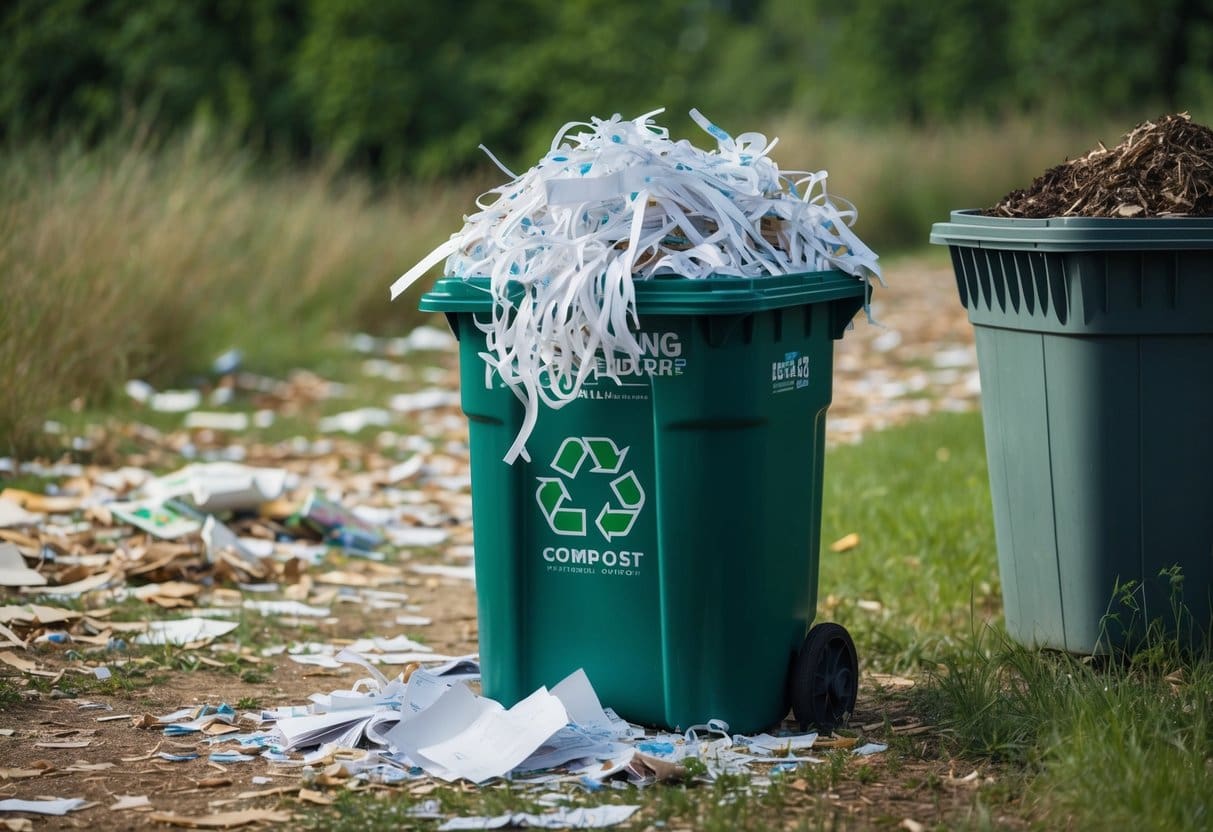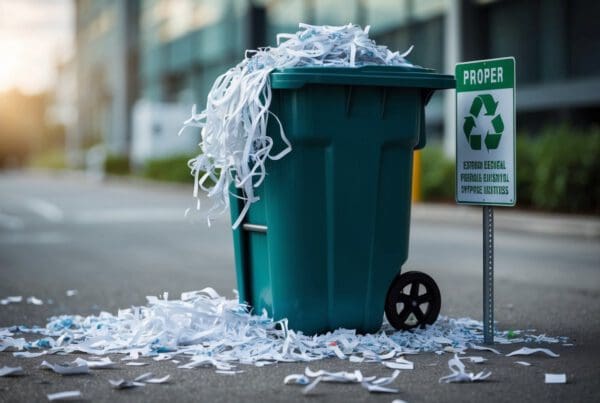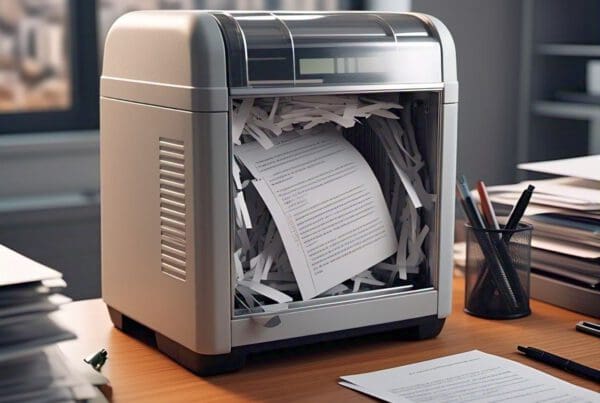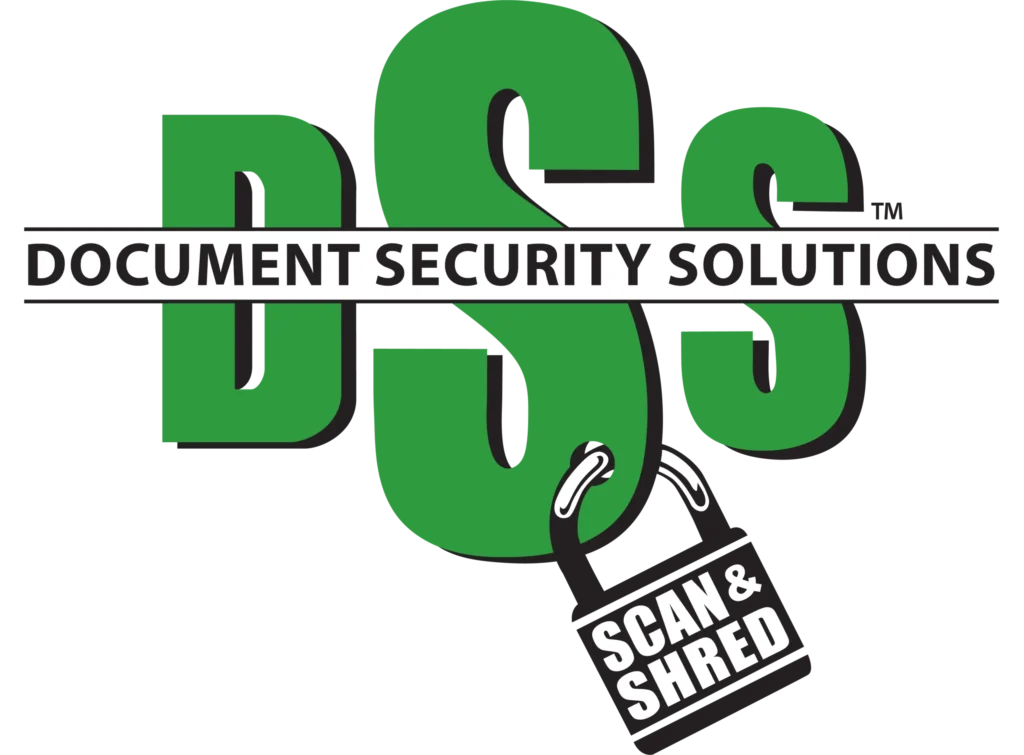Environmental Impacts of Shredded Paper Disposal

Proper disposal of shredded paper can greatly aid in environmental conservation. By recycling and composting, we reduce energy consumption and carbon footprints. These practices support environmental sustainability and waste management.
Advantages of Recycling Shredded Paper
- Reduces Carbon Footprint: Recycling lowers our carbon footprint by reducing the need for new materials.
- Conserves Resources: Saves energy and resources, cutting down the demand for logging and preserving forests.
- Produces Useful Products: Recycled paper is used to make packaging and tissue, reducing the need for virgin materials.
- Decreases Landfill Waste: Reduces the amount of paper waste in landfills and lowers harmful emissions from raw paper processing.
- Energy Efficiency: Shredding and recycling paper requires less energy than producing new paper.
- Protects the Environment: Helps reduce air and water pollution by minimizing the need for paper production.
Composting Shredded Paper for Soil Health
Shredded paper is an excellent addition to compost piles. It is high in carbon and balances out nitrogen-rich materials, creating a more effective compost. The paper breaks down gradually, enriching soil with nutrients over time.
By using shredded paper in compost, we support eco-friendly practices that benefit soil health. Healthy soil retains water better and provides plants with essential nutrients. This not only improves garden growth but also supports larger ecosystem health.
Composting helps divert waste from landfills, reducing methane emissions. As methane is a potent greenhouse gas, this practice is critical for environmental conservation. Composting shredded paper is simple, yet it has far-reaching benefits.
Shredded Paper in Waste Management
Effective waste management includes finding ways to handle shredded paper responsibly. When shredded paper is sent to recycling facilities, we prevent unnecessary landfill use. This aligned effort with waste management systems ensures environmental sustainability.
Shredded paper in waste systems can be managed to enhance recycling rates. Special recycling bins for paper can encourage proper sorting and disposal. When we cooperate in these systems, our waste management becomes more efficient.
It’s important that we understand the role of shredded paper in waste management. With these strategies, we can make a difference in reducing waste and conserving the environment. Proper disposal methods contribute significantly to cleaner surroundings.
Data Security and Proper Paper Shredding
Ensuring our data remains secure involves more than password protection. Effective document disposal plays a significant role in safeguarding sensitive information.
Importance of Confidential Information Destruction
When we throw away sensitive papers, like bank statements and medical records, it’s crucial that we destroy them properly. Shredding breaks these documents into tiny pieces, making them harder to reconstruct. This process helps prevent identity theft and keeps our personal information safe.
Family photos and vacation receipts might not need this level of attention, but anything with personal data should be treated with care. The risk of leaving sensitive details exposed is too high. We all deserve peace of mind when disposing of personal documents.
Choosing a Professional Shredding Service
Sometimes, using a personal shredder isn’t enough. A professional shredding service offers another layer of protection. These services are equipped to handle large amounts of paper and ensure that confidential information is completely destroyed.
Professional services often adhere to strict regulations regarding document disposal. By choosing a reputable company, we can trust that our data, whether from home or work, is handled responsibly. It not only helps with security but can also save time as we rely on experts for thorough destruction.
Innovative Uses for Shredded Paper

Shredded paper has many creative applications that support reuse and environmentally friendly practices. It can be used in packaging, as animal bedding, and in various eco-friendly alternatives.
Shredded Paper as Packing Material
We can use shredded paper as an excellent alternative to traditional packing materials. It cushions fragile items, protecting them without the need for bubble wrap or foam peanuts. This reuse is both cost-effective and environmentally friendly.
Using shredded paper reduces waste and supports recycling efforts. It is lightweight, which can help reduce shipping costs. Businesses and individuals who choose shredded paper for packaging contribute to a more sustainable environment. It’s an accessible and easy-to-use option for most households.
Creating Animal Bedding
Shredded paper is an ideal material for animal bedding. It’s suitable for small pets like hamsters, guinea pigs, and rabbits. The paper is soft and absorbent, ensuring a comfortable environment for these animals.
This kind of bedding is inexpensive and easy to change, providing a convenient option for pet owners. We recommend ensuring the paper is free from harmful inks or chemicals before using it for bedding. It’s also important to replace the bedding regularly to maintain cleanliness.
Other Eco-friendly Alternatives
There are various eco-friendly alternatives for shredded paper that promote recycling and proper disposal. Composting shredded paper is an effective way to recycle it. Adding shredded paper to compost helps balance the carbon-rich materials needed for effective composting.
Recycled paper products, such as notebooks and toilet paper, also benefit from shredded paper. This process lessens the demand for raw materials and lowers overall environmental impact. We can all participate in these practices to ensure we live sustainably and reduce waste.
Navigating Recycling Guidelines and Programs
When it comes to recycling shredded paper, knowing the local rules and participating in community programs is essential. Let’s explore how to make sure we’re disposing of shredded paper the right way.
Local Recycling Center Regulations
Each local recycling center may have its own guidelines for accepting shredded paper. Some facilities allow it, while others might require special handling to prevent contamination. It is important to check these rules before adding shredded paper to our recycling bins.
Shredded paper can be challenging to recycle because it may slip through sorting machines. Using a paper bag to contain the shredded pieces can prevent issues during processing. By following these guidelines, we help improve the efficiency of our local recycling service.
Understanding these specific regulations not only aids in proper disposal but also ensures our efforts contribute to creating quality recycled paper products. Local centers often provide information online or through flyers to help us find the right procedure.
Participation in Community Recycling Programs
Joining community recycling programs can make a significant difference in our efforts to recycle shredded paper. Many areas offer specialized programs that focus on this material. By participating, we can access resources and support, enhancing our overall recycling experience.
These programs may offer designated collection days for shredded paper, or even provide separate bins for this purpose. This organized approach reduces contamination risks and helps ensure every piece gets a chance to be recycled into new products.
Getting involved in these programs is also a great way to connect with neighbors and other residents. Together, we can boost awareness and promote sustainable practices in our community.





